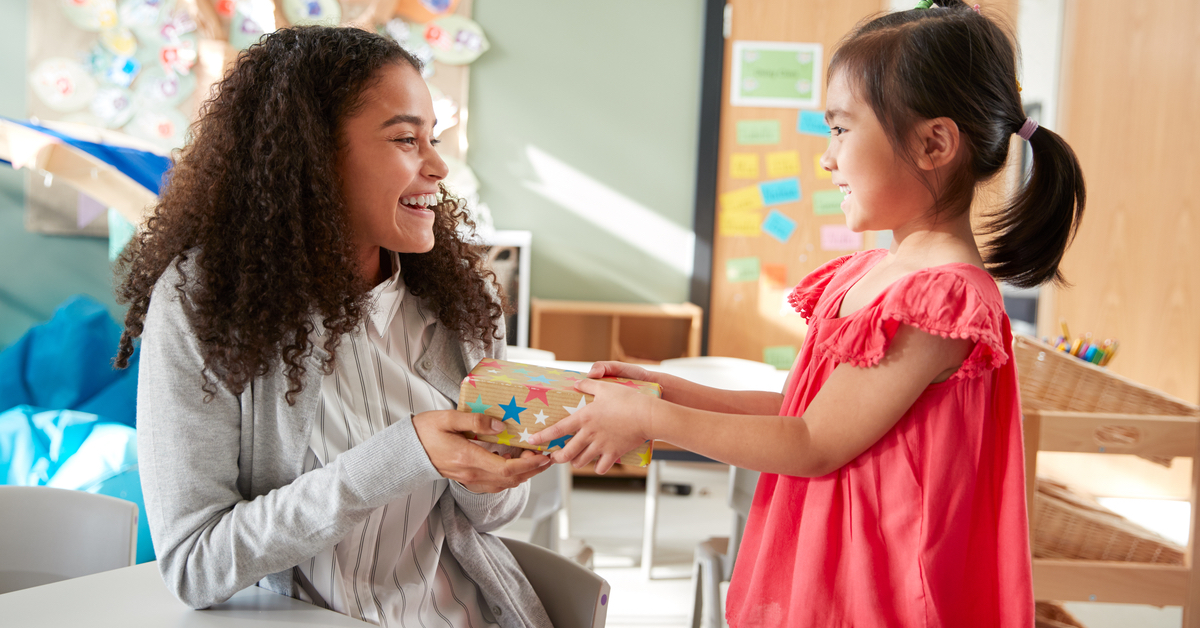
From charity to tradition to gratitude, there’s so much to reflect on as a family this time of year. We’ll help you harness the holiday season and use it to teach kids early and often how to be thoughtful, generous, happy human beings.
- Traditions Are Worth Keeping
When kids are very young they may not appreciate why every year you hide a pickle ornament on your Christmas tree or play dreidel on the floor in front of Grandma Sarah’s fireplace, but in time they’ll not only remember these traditions for themselves–they’ll start to look forward to them. Keeping traditions also allows you to share stories about your family’s history. One small group activity or family-favorite side dish can teach kids something they may not have known about a loved one who has passed or you, their parents.
Every family should have an opportunity to create their own traditions, too. Ask yourself what you loved (or didn’t) about certain family traditions you kept as a child and commit to carrying on the ones that brought you the most joy. And remember, they don’t have to be exact to be meaningful. If you tweaked your great aunt’s pie recipe but you’re still making and serving the pie that’s still something to honor and celebrate with your own children.
- Need vs. Want
With wishlists front of mind for everyone this time of year, it’s important to help kids grasp the concept of need vs. want. When it comes to presents, examples that aren’t as need-based as food or shelter will resonate more with young kids. I know you want a new bicycle, but you also need a new jacket. Or, you may want another baby doll, but you really need new sheets for your big-girl bed. Helping your child see a winter jacket in their favorite color or new sheets with their favorite character or motif as exciting makes the “needs” more fun to put on the wishlist and unwrap. Of course, pre-schoolers may still get upset if they didn’t get a particular toy or gift, but they’re also young enough to be completely distracted by what they did get to stay upset for long.
An important layer of this lesson is moderation, so be sure to remind kids that before they ask for more of something they have or had they should think about what else they might need now or want soon. Gifts for what’s around the corner–like outdoor summer fun or an upcoming family trip–get kids thinking practically and beyond the immediate thrill of new toys.
- It’s The Thought That Counts
One of every parents’ worst nightmares is watching their kids open a gift and then complain (or cry or tantrum) about how it’s not the Paw Patrol set they wanted. Gifts don’t have to be perfect to be thoughtful, right? But the truth is, this practice even adults could use a refresher on from time to time. It can be uncomfortable, awkward even, to react to a gift that’s not quite right.
So how do you teach a young child to act gracefully in company? It starts with a conversation pre-gift exchange. Explain to kids how it can be easy or, more likely, really hard to think of gifts that others will want or need and sometimes we get it right and other times we miss the mark. But we say “thank you” no matter what because we’re not thanking our loved ones for the gift itself as much as we’re thanking them for taking the time to think of a gift, buy it and wrap it up for us which is pretty thoughtful. It can also help to tell kids they can tell you in privacy what they liked or didn’t like about their presents so they know they can share their feelings later without hurting anyone else’s.
- Giving is Better Than Receiving
If you want to raise a social-conscious kid, teach them early about charity. At the holidays, work together at home to make new and used donations to local families or volunteer at your local food drive or soup kitchen. Don’t just have the donation conversation, bring your child with you to drop off donations or volunteer so they have a memory of the impact they’re making. And if you find yourself making a monetary donation, invite your child to make one from their own piggy bank and/or be the one to hand over the money physically. The more they’re involved, the more they’ll learn.
You can also teach kids to enjoy being the gift giver with your family and friends. They can get so much pleasure out of picking out presents for the people they love if only you give them the chance. Before or after they make their wishlists, have your child sit down with you to brainstorm gift ideas for those on your list. It’s only when they’re truly involved in the gift-giving process will they appreciate the joy it brings them to find, wrap and give a present they thought that special someone would need or want.
- Family Matters the Most
The holidays are always the busiest time of year. And while the busyness often comes from all of the friends and family get-togethers, it’s not uncommon to be too busy to find time to spend baking, movie watching, or just simply snuggling with the people who matter the most–your immediate family. To teach kids this lesson, you have to show them. That might mean saying no to the cookie swap or to a holiday party if it means you’ll have enough time with your own family that week. It also helps to make the time you spend together special. We don’t mean special in the pressure-filled way, but rather plain old special. An extra-long hug, an unexpected pretend game… kids don’t need a ton of bells and whistles to feel loved and enjoy the time they spend with you.
- You Can Find Joy in Others
Kids are naturally self-centered so paying attention to other’s feelings is something they have to be taught. Beyond how their actions might make one feel–something we teach kids as they learn to share–we have an opportunity to remind them that they can feel joy when they see joy, which is in no short supply during the holidays. Parents can use phrases like, “Watching you play with that new toy makes me so happy,” or ask children questions like, “Do you smile when you see others smiling?” to help them recognize their own emotions and help them accept the energy around them.



